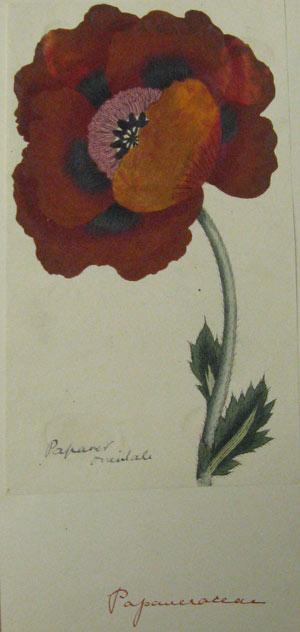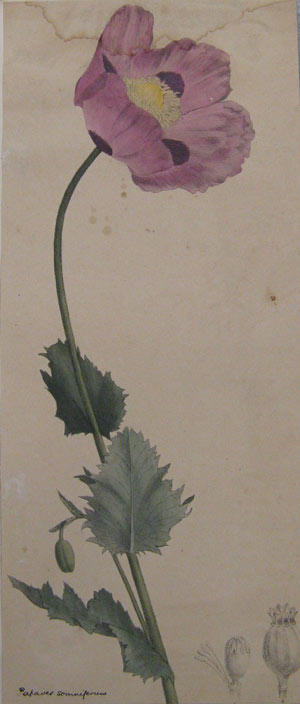Poppies - a botanist's view


Welsh poppy, Meconopsis cambrica. This specimen was collected in May 1949 from Hawkshead, Cumbria. Accession number 1987.376.98 As a botanist I was fascinated to see the Poppies: Women and War exhibition at the Museum of Liverpool, which includes botanical photographs of poppies in the field and draws on themes of strength and resilience inspired by the flower. Poppies always invoke for me a feeling of happiness, large colourful flowers in bright garish colours. 'Poppy' refers to a group of species that cover a number of genera in the family Papaveraceae. The one that springs to mind for most people is Papaver rhoeas which is used as the symbol of remembrance and hope.

Papaver somniferum - the common garden poppy or opium poppy. Accession number 1990.11.1762 Many members of the genus Papaver like to grow on disturbed soil and as such Papaver rhoeas – field poppy, scarlet corn poppy, common poppy, Flanders poppy - became the symbol of Remembrance Day. The poppies produce large numbers of seeds forming a seed bank in the soil. The seeds spring to life once the soil is disturbed and the environmental conditions are right. During the Napoleonic wars the poppies grew up amongst the fallen bodies of soldiers, transforming the barren fields into red seas of poppies. The First World War brought about the same phenomena with poppies springing up on the desolate battlefields and around newly dug graves due to the disturbance of the soil. The poem by the Canadian surgeon John McCrae In Flanders Fields encapsulated this and popularised its use as a symbol. It is an agricultural weed and before the onset of herbicides it would dominate the fields, growing in such numbers you could easily mistake them as being the crop.

Papaver orientale. Accession number 1990.11.1760 The only member of the genus which is an agricultural crop is Papaver somniferum - the common garden poppy or opium poppy. The two common names conjure quite different views of what this plant is; that beautiful ornamental that pops up year after year, following digging the soil or the plant of violence and drugs. As one of the common names suggests this is the source of opium which has been used in many drugs (such as morphine). It is also the source of the culinary poppy seed and poppy oil. This plant has a long history with its images found on ancient Sumerian artefacts and the ancient Monoans used it for rituals and healing. The latin base of the name (somniferum) means 'sleep bringing', which refers to the sedative affects of some of its opiates. These powers where highlighted in the story of 'The Wizard of Oz' when they fell asleep in a field of poppies. One of my favourite poppies is Meconopsis cambrica, the Welsh poppy, with its small delicate orange to yellow flowers. This is a perennial plant (it grows year after year) and loves damp ground, it produces lovely pale soft green young leaves.
The botany collections at the World Museum contain more than 1000 botanical specimens and drawings of different types of poppies, including the ones shown here.
